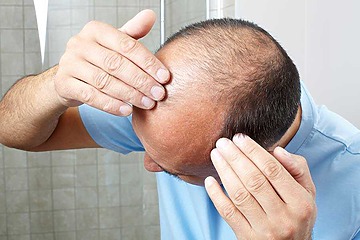Hair loss can significantly impact an individual’s self-esteem and confidence. For those seeking a solution, Scarless Hair Transplant in Dubai offer a minimally invasive alternative to traditional methods, resulting in natural-looking hair without the visible scars. In this guide, we will explore how scarless hair transplants are performed, detailing the techniques used, the procedure itself, and what patients can expect throughout the process.
Understanding Scarless Hair Transplants
Scarless hair transplants primarily utilize two advanced techniques: Follicular Unit Extraction (FUE) and Direct Hair Implantation (DHI). These methods allow for the precise extraction and implantation of hair follicles, ensuring minimal trauma to the scalp and reducing the risk of scarring.
1. Follicular Unit Extraction (FUE)
FUE involves extracting individual hair follicles from the donor area, typically located at the back of the head, using a specialized punch tool. This method avoids the linear incision common in traditional hair transplant methods, resulting in tiny, dot-like scars that are often imperceptible.
2. Direct Hair Implantation (DHI)
DHI is a more advanced variant of FUE. In this method, hair follicles are not only extracted but also implanted immediately using a unique implantation device. This technique allows for greater control over the placement and angle of each follicle, promoting a denser and more natural appearance.
The Scarless Hair Transplant Procedure
The scarless hair transplant procedure generally follows several key steps, ensuring a comfortable experience and optimal results for the patient.
Step 1: Consultation and Planning
Before the procedure, patients undergo a thorough consultation with a qualified surgeon. This step involves:
- Assessment of Hair Loss: The surgeon evaluates the extent and pattern of hair loss to develop a tailored treatment plan.
- Discussion of Goals: Patients share their expectations and desired outcomes, allowing the surgeon to customize the approach.
- Pre-Operative Instructions: Patients receive guidelines on preparing for the procedure, including medications to avoid.
Step 2: Preparation
On the day of the procedure, the following preparations take place:
- Anesthesia: Local anesthesia is administered to ensure that the patient remains comfortable and pain-free during the extraction and implantation processes.
- Hair Preparation: The donor and recipient areas of the scalp are cleaned and prepped to minimize the risk of infection.
Step 3: Extraction of Hair Follicles
The extraction process varies slightly between FUE and DHI:
- FUE:
- Using a small, circular punch tool, the surgeon carefully extracts individual hair follicles from the donor area.
- Each follicle is removed with precision, ensuring minimal damage to surrounding tissue.
- DHI:
- Similar to FUE, but the extraction tool used is designed to allow immediate implantation of the follicles.
- This method eliminates the need for storage of extracted follicles, preserving their viability.
Step 4: Implantation of Hair Follicles
Once the hair follicles are extracted, the implantation process begins:
- FUE:
- After extraction, the surgeon creates tiny incisions in the recipient area where the follicles will be placed.
- Each follicle is carefully inserted into the incisions, following the natural growth pattern of hair for optimal results.
- DHI:
- Using a specialized implantation device, the surgeon places the extracted follicles directly into the recipient area.
- This device allows for precise control over the depth and angle of implantation, enhancing the overall appearance.
Step 5: Post-Procedure Care
After the hair follicles are implanted, patients receive detailed post-operative care instructions, including:
- Avoiding Strenuous Activities: Patients should refrain from heavy exercise for at least a week to minimize swelling and promote healing.
- Caring for the Scalp: Gentle cleansing and avoiding harsh products are essential during the initial healing phase.
- Follow-Up Appointments: Regular check-ups with the surgeon are necessary to monitor healing and hair growth progress.
Recovery and Results
One of the significant advantages of scarless hair transplants is the reduced downtime. Most patients can resume light activities within a day or two and return to more strenuous activities within a week. Initial results may be visible within a few months, with full results typically seen within 6 to 12 months.
Long-Term Care
Although the transplanted hair is permanent, ongoing care is essential for maintaining the health of the hair and scalp. Patients may be advised to:
- Use Gentle Hair Products: Avoid harsh chemicals and opt for products designed for sensitive scalps.
- Consider Additional Treatments: In some cases, hair growth treatments like minoxidil or low-level laser therapy may be recommended to enhance results.
Conclusion
Scarless hair transplants represent a significant advancement in hair restoration techniques, offering individuals the opportunity to regain their hair without the drawbacks of traditional methods. With minimally invasive procedures, reduced recovery time, and natural-looking results, FUE and DHI are transforming the landscape of hair restoration. If you’re considering a hair transplant, consult with a qualified specialist to explore your options and embark on your journey to fuller hair with confidence.






Comments